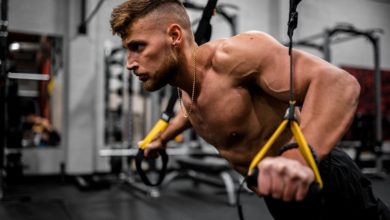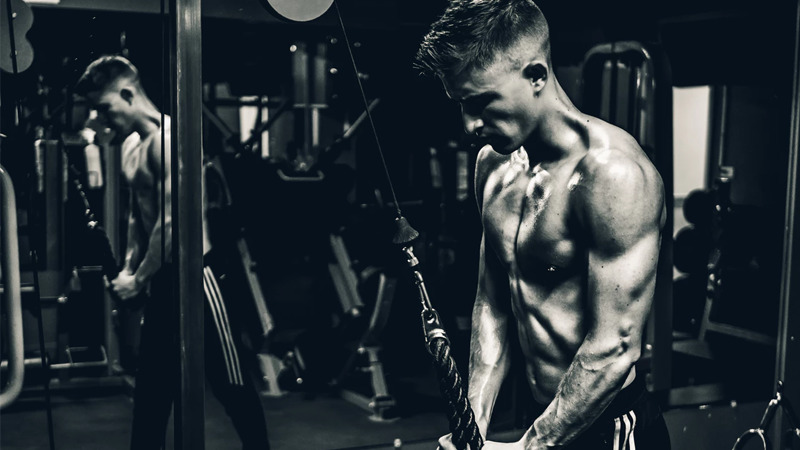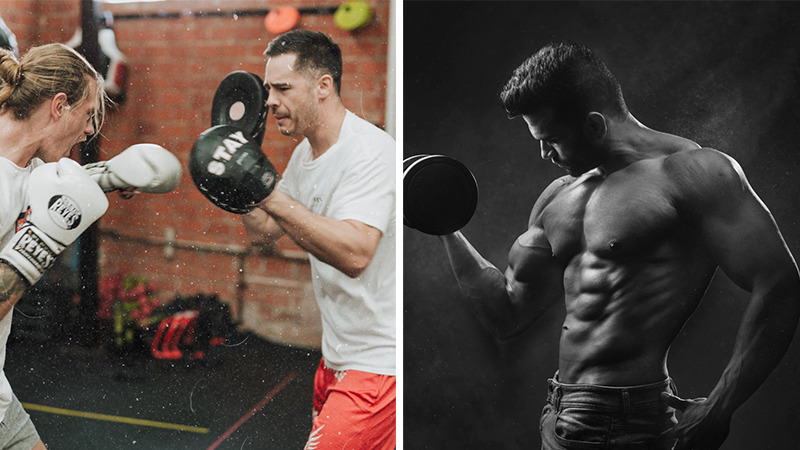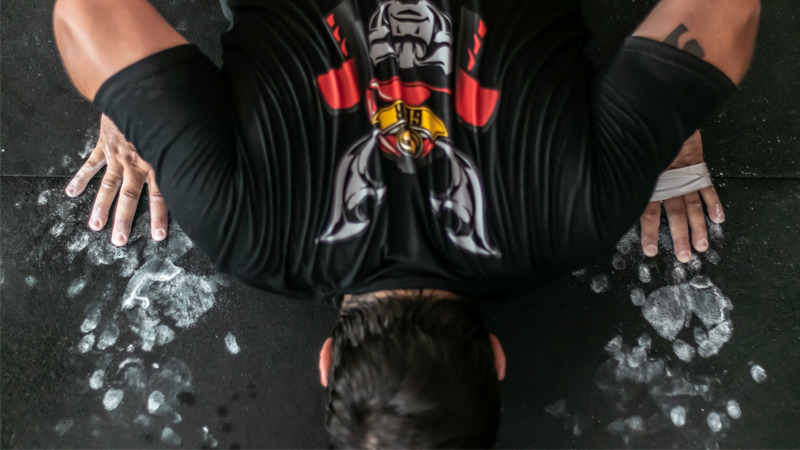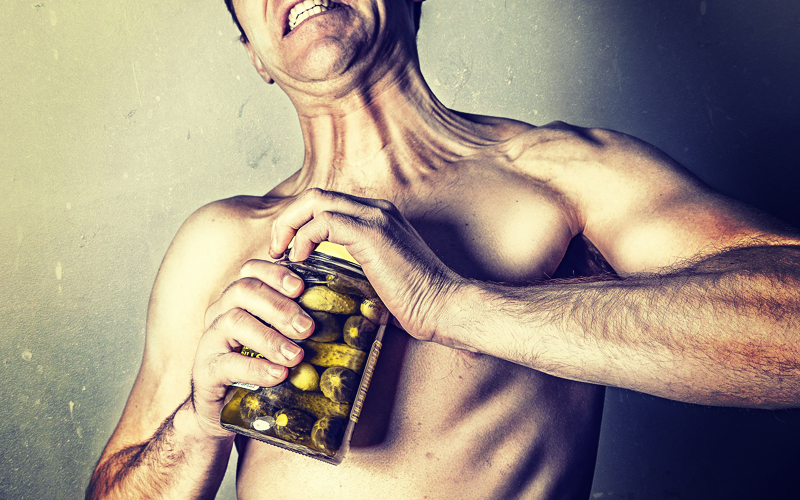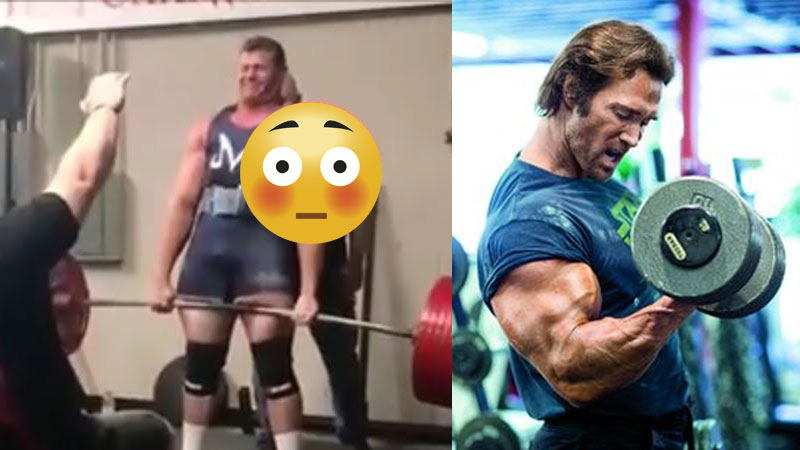
Strong, vascular arms are the name of the game when it comes to grabbing your bro code and qualifying for your alpha pass. But with a partial bicep curl you’ll be sat on the sidelines with your head in your hands.
Partial tears are the stuff that nightmares are made of. There’s no striking an eye-catching double biceps pose. You’re not hitting up a panty-moistening most muscular when your sh*t’s hanging off your arm bro, right?
When thing’s are going well there’s nothing better than rocking up to the gym and smashing an arm workout like Donkey Kong smashes barrels. The pump is unreal.
But good training is clever training. It’s about making gains and avoiding injury.
Think you might have a partial bicep tear?
This is what you need to know…
The Biceps – Guns of Fury, Pythons of Vengeance
Show us a dude that doesn’t want bigger arms and we’ll prove he’s a lying beta-Pinocchio-muthaf*cker. All bros want bigger arms… every last one of us.
The problem is that it’s too easy to go full HAM on your arms, wishing those bubbles of pumped up muscle to grow with every single God damn rep.
The problem is, there’s a fine line between training enough to stimulate jacked mass… and training too much, leading to injury.
Intelligence > motivation.
A quick physiology breakdown of the biceps
Bro, why the science lesson?
Effective training comes from good science. And understanding more about muscle function helps you build better programs. Better programs means greater results. And last of all, great results means fuarking huge slabs of muscle hanging from your arms.
It’s the circle of gains life bro.
Short head and long head
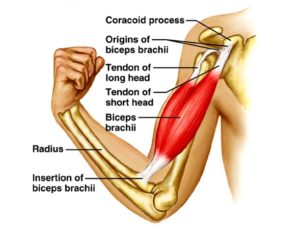
Your biceps are made up of two different muscles – a long head and a short head.
- Long head – attaches onto your radius (forearm) bone and supraglenoid tubercle of the scapula (just above the shoulder joint).
- Short head – attaches onto the radius but originates slightly higher and further forward than than the long head on the scapula at a position called the coracoid process
Both muscles share a common distal biceps tendons that attach each muscle to the radius, but attach at different places at the shoulder. This is important when we’re talking about partial bicep tears because attachments can affect which muscle and where the tear occurs.
It’s also important when you’re planning a full bicep training program to maximize muscle mass.
Biceps muscle function
Both the short head and the long head of the upper arm function differently. And knowing how to target each one properly allows you to craft huge ass pythons.
The short head is the one that most people focus on when the rock up to the iron house for arm day.
It’s activated when your palm faces upward like traditional bicep curls. It’s also the muscle that creates that mountainous peak that make the girls wetter than a washcloth when you strike a pose.
The long head lies on the outside of your arm and is often neglected. Not only is it responsible for bicep curling in a reverse and hammer grip position, it also stabilizes your shoulder – helping reduce deltoid tendon ruptures, as well as wear and tear of your shoulder joint.
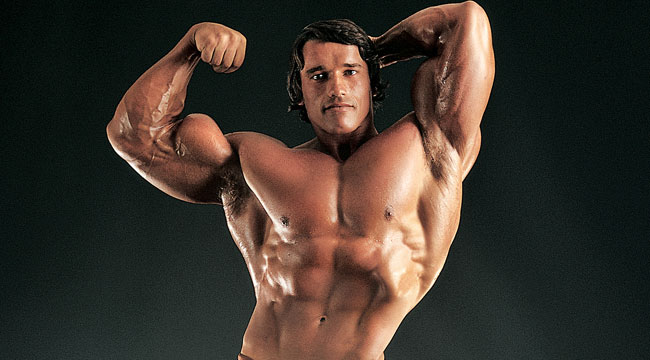
Knowledge Flex: The biceps is a group of two muscles that are involved in flexion of the elbow and stabilization of the shoulder.
[/infobox]What’s a Partial Bicep Tear?
Your biceps are at risk of a few different injuries.
- Tendinitis – inflamed tendons (usually the tendons at the radius) from too many weights or general overuse
- Elbow dislocation – because you went for that last overhead press bro and it all went wrong.
- Bite marks from droves of women worshiping your huge jacked arms (maybe)
- …and finally bicep tears (more likely)
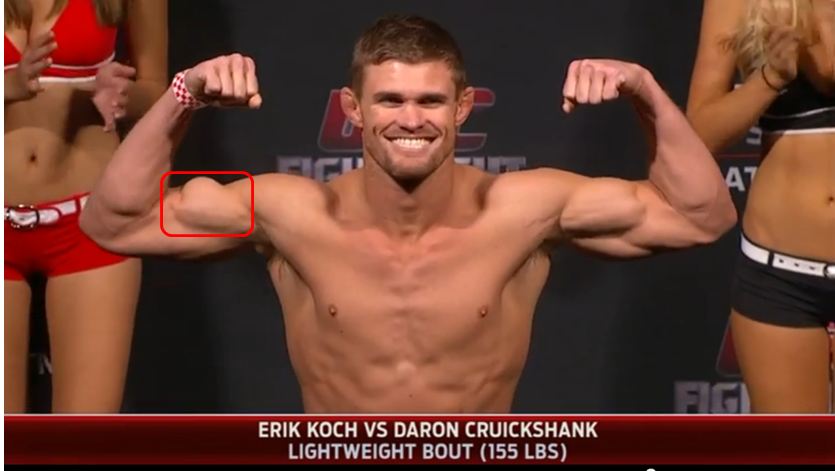
You ever seen a bicep tear?
It’s not the kind of thing for sqeamish pussies. It’s full on. Oh, and if you ever hear it happen bro, it’s a sound you’ll not forget.
A snapping bicep actually a pretty beautiful sound. If you forget the fact that a dude’s just broke the sh*t out of his bicep. It’s like Slipknot’s drummer Jay Weinberg crashing down on his snare with the mics turned up to 11 – a snapping noise that pierces the Goddamn heavens bro.
Who’s more likely to suffer a partial bicep tear?
Guys aged 40-60 are likely to suffer a torn bicep. Not because they’re going hard in the gym, more because of prolonged tendon degeneration.
There’s also a fair amount of research showing bros who take steroids are over 20% more likely to suffer upper body tendon tear compared to natty lifters. This is likely to do with the fact that AAS use massively increases muscle strength compared to connective tissue integrity.
It’s like trying to pin a super strong tent down with tent pegs made of diarrhea.
Symptoms of a Partial Bicep Tear – What to Look Out for
Bicep tendons help transmit the mechanical force of muscle contraction to the bone, where movement can take place.
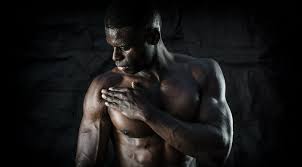
Both heads of the bicep attach to their respective bones via tendons. These are strong but relatively inelastic cords of strong fibrous collagen tissue that help the muscle contract.
You’re more likely to tear the long head tendon of your upper arm.
90% of tears happen at the shoulder, with 10% coming at the elbow.
Think you’ve torn your bicep tendon?
Here’s what to look out for:
- Intense, bowel-shattering pain in your upper arm
- Pain when you try to bend your arm
- Weakness – you can’t lift weights at all
- A large bulge above your elbow where your bicep muscle has slid down your humerus
- Difficulty turning rotating your wrist or upper arm
- Bruising
If the tear occurs at the elbow you might also find that symptoms include:
- A bulge at your upper arm, not middle or lower
- Swelling at your elbow joint
Knowledge Flex: Partial bicep tears are more likely to occur at the shoulder joint, leading to symptoms including pain, swelling, bruising and bulging.
[/infobox]How Do You Recover from a Partial Bicep Tear?
If you’ve suffered a complete bicep tear you’re looking at surgical repair to reattach it. You’ll be looking at 4-6 months off training too.
For a partial bicep tendon tear here’s your treatment plan:
- Rest – don’t be dumb and try to train
- Ice packs – 15-20 minutes, 3-5 times each day
- Anti-inflammatory medications
- Go see your doctor if there’s a bulge in your arm
